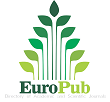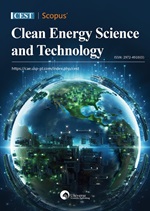Submissions
Submission Preparation Checklist
As part of the submission process, authors are required to check off their submission's compliance with all of the following items, and submissions may be returned to authors that do not adhere to these guidelines.- The submission has not been previously published, nor is it under consideration by another journal (or an explanation has been provided in Comments to the Editor).
- The submission file is in Microsoft Word.
- The text adheres to the stylistic and bibliographic requirements outlined in the Author Guidelines.
- Articles undergo a rigorous double-blind peer review process.
Article
Articles, also known as original research articles, report detailed studies (methods, results, application, etc.) of original research.
Review
Reviews summarize and assess developments of specific areas, and evaluate trends of the field.
Perspective
Perspective articles contain authors’ viewpoint on a particular area by discussing the latest developments and future directions and clearly presenting the authors’ perspective.
Commentary
Commentaries present a criticism of a previously publication, usually with a short length.
Case Reports
Case reports provide description and discussion of a case based on original observations.
Brief Report
Brief reports are short articles reporting original research and/or preliminary findings with fewer details.
Commnunication
Communications are short articles that briefly report novel original research.
Hypothesis
Hypothesis articles provide a new argument and explanation in response to new findings in a specific field, aiming to introduce a new hypothesis or theory.
Viewpoint
Viewpoints, usually commissioned, provide researchers with an opportunity to express their views on specific topics. It is sometimes presented in a Q&A format.
Copyright Notice
Authors submitting to USP journals agree to publish their manuscript under the Creative Commons Attribution 4.0 International License (CC-BY 4.0) where authors agree to allow third parties to share their work (copy, distribute, transmit) and to adapt it, under the condition that the authors are given credit, and that in the event of reuse or distribution, the terms of this license are made clear.
Authors retain copyright of their work, with first publication rights (online and print) granted to Universe Scientific Publishing or the owner of the journal in question.
Privacy Statement
Personal information
USP values authors’ privacy. The personal information that USP collects and the ways in which USP uses the information are described in this privacy policy section. USP has the right to collect and utilize personal data required for the processing and publishing of submitted articles. Names, affiliations, and contact information, such as a mailing address, email address, phone number, and fax number, may be included in this data.
Activities that may involve the use of personal information include administering, personalizing, enabling access to services, processing manuscripts, publishing articles, communicating with authors, sending statements and invoices, collecting payments, and sending marketing communications.
Third-party links
Links to third-party publications and/or websites are provided for informational reasons only and it does not represent an offer or solicitation to purchase or sell any services or products of any type. USP is not responsible for the accuracy, legality, or content of the external site or subsequent links. Third parties are responsible for the content on their own websites. Authors are recommended to read and analyze the privacy and security policies of the site they are visiting. For responses to content-related questions, please contact the external site.
Contact USP
For any inquiries concerning USP’s privacy policy or how USP handles authors’ personal data, please contact editor.office@usp-pl.com.




.jpg)
.jpg)

